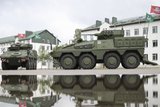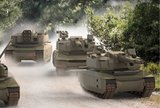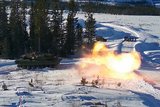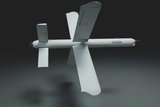Lockheed Martin Common Vehicle Next Generation deliveries complete, ready for deployment
The Lockheed Martin Common Vehicle Next Generation (CVNG), an armed lightweight military vehicle, is ready for its initial in-theater deployment. The CVNG is an upgraded configuration of the High Mobility Transport vehicle in use by US and allied armed forces. Deliveries of the upgraded vehicles were completed in June 2010, just four months after the contract award in February 2010.
The upgraded vehicles received enhanced blast and ballistic armor protection. Lockheed Martin is the prime contractor on the program, with the armor and other occupant survivability systems supplied by Jankel Tactical Systems LLC.
The CVNG's innovative and modular design delivers high levels of reliability and ease of maintenance. The vehicle easily supports five occupants plus a main gunner. Its open cab offers a 360-degree fighting platform, but armored panels enclose the cab for better protection. CVNG features a 4x4 or 6x6 configuration, with a removable third axel, and also offers a reconfigured modular cargo deck optimized for larger items. The lightweight vehicle is internally transportable on C-130, C-5, CH-53 and CH-47.
"Our customers recognize the new level of mission flexibility this vehicle brings to the battlefield," said MaryLynne Lubinger, program manager for CVNG at Lockheed Martin. "Our CVNG upgrades increase situational awareness, mobility, agility and top speed, and it's ready for use by our Soldiers in the world's most extreme environments."
"We are pleased at having been selected by Lockheed Martin for this important program for our Warfighters. We are looking forward to delivering similar success stories on other programs for the US Government," said Alec Mackenzie, president of Jankel Tactical Systems LLC.
Key survivability components of the upgrade include Jankel's modular blast and ballistic armor system and the company's Blast Limiting and Attenuation Seat Technology (BLASTech) mine/Improvised Explosive Device (IED) acceleration attenuating seating and pulse attenuation devices. Together, these systems significantly enhance the survivability of the vehicle crew during a mine/IED attack by reducing the incidence and severity of injury. Designed to overmatch the threat from anti-tank mines and improvised explosive devices, BLASTech has been tested extensively under international protocols and standards. Fully compatible with US FMVSS crash test standards, BLASTech seating is in service with the US Military and its allies, and has been proven repeatedly in combat to save lives and reduce the incidence and severity of injury.
Source: Lockheed Martin
More from Land Warfare
-
![Hungary set to begin using Hero 400 loitering munitions]()
Hungary set to begin using Hero 400 loitering munitions
Developed by Israel's Uvision and with systems being sold in the thousands to multiple European NATO countries and the US, the Hero family of loitering systems is also in production in the US and Italy, the latter through Rheinmetall.
-
![Croatia orders Leopards and CAESAR howitzers as Lithuania orders more CAESARs]()
Croatia orders Leopards and CAESAR howitzers as Lithuania orders more CAESARs
The Leopard is becoming the tank of choice in central and eastern Europe as Croatia joins Lithuania, the Czech Republic and Hungary in ordering the platform. Lithuania and Croatia have also signed for CAESAR howitzers.
-
![Light Reconnaissance Strike – enabling a vital mission set (Studio)]()
Light Reconnaissance Strike – enabling a vital mission set (Studio)
A new system-of-systems concept will unlock digital integration of sensors and weapons for Light Forces, allowing them to shape the battlefield environment on their own terms and upgrade legacy platforms.
























